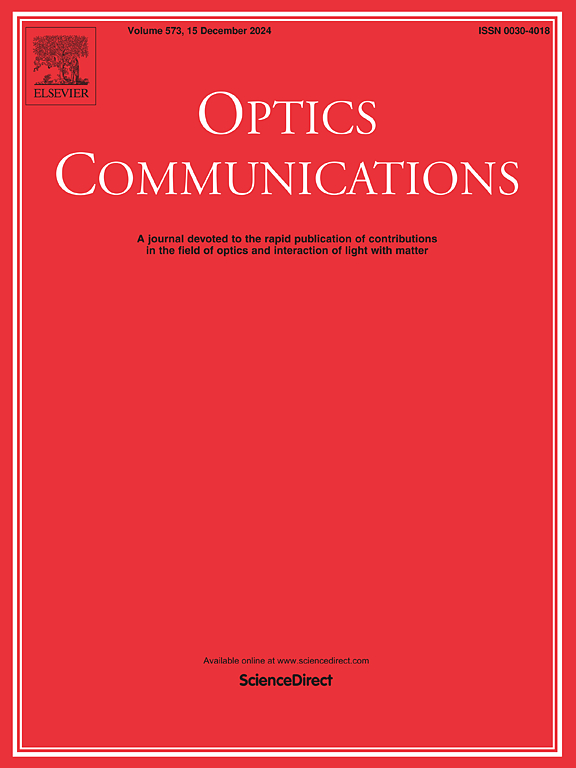Electrically pumped dielectric loaded surface plasmon waveguide laser
IF 2.2
3区 物理与天体物理
Q2 OPTICS
引用次数: 0
Abstract
Here we experimentally demonstrate an electrically pumped surface plasmon waveguide laser, which generates surface plasmons on a flat metal surface. The laser is formed by a narrow strip of electrically pumped semiconductor optical gain medium placed close to a flat silver surface. The gain medium is electrically pumped via long thin laterally connected semiconductor pathways. The semiconductor gain medium acts as a dielectric load to localize the surface plasmon component on the silver surface. Lasing is demonstrated at wavelengths near 1500 nm with a section of waveguide which forms a Fabry-Perot cavity. The lasing mode is shown to be the predicted zero order transverse magnetic mode, which allows the greatest miniaturization of the laser size. Lasing is demonstrated at low temperatures due to fabrication imperfections. However, analysis of the results shows the structure has good potential for room temperature operation. With the fabricated device parameters a material gain of 55 cm−1 is required in theory to overcome metal losses, and the confinement factor for the laser waveguide is 0.5. This laser demonstration shows that lateral electrical pumping schemes can be realized. Furthermore, that the schemes provide sufficient pumping of the gain medium to overcome metal losses in surface plasmon waveguides.
求助全文
约1分钟内获得全文
求助全文
来源期刊

Optics Communications
物理-光学
CiteScore
5.10
自引率
8.30%
发文量
681
审稿时长
38 days
期刊介绍:
Optics Communications invites original and timely contributions containing new results in various fields of optics and photonics. The journal considers theoretical and experimental research in areas ranging from the fundamental properties of light to technological applications. Topics covered include classical and quantum optics, optical physics and light-matter interactions, lasers, imaging, guided-wave optics and optical information processing. Manuscripts should offer clear evidence of novelty and significance. Papers concentrating on mathematical and computational issues, with limited connection to optics, are not suitable for publication in the Journal. Similarly, small technical advances, or papers concerned only with engineering applications or issues of materials science fall outside the journal scope.
 求助内容:
求助内容: 应助结果提醒方式:
应助结果提醒方式:


